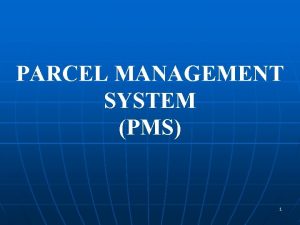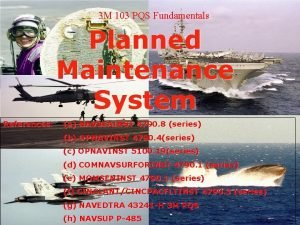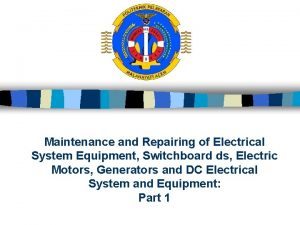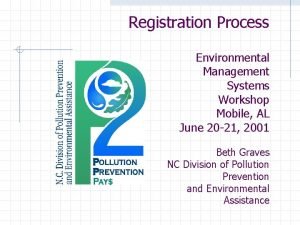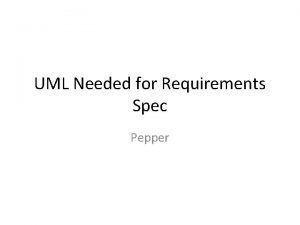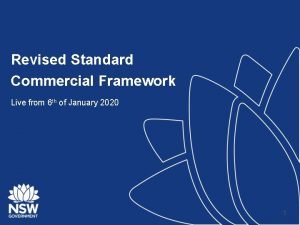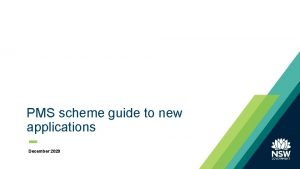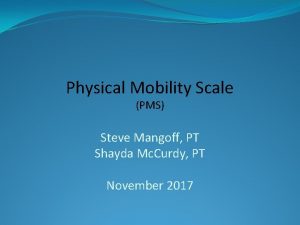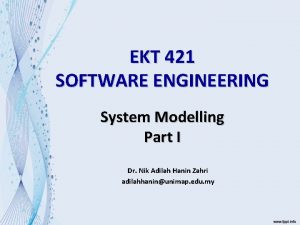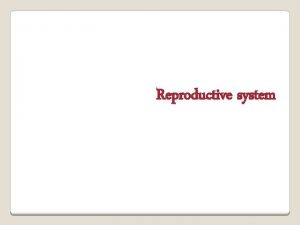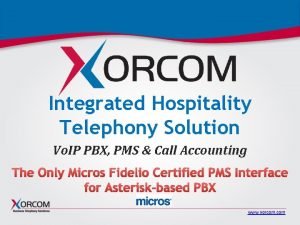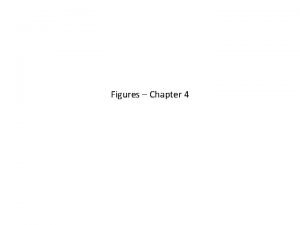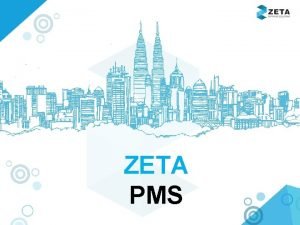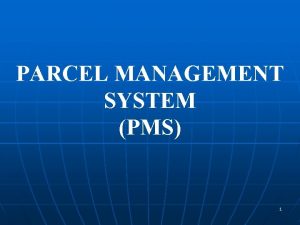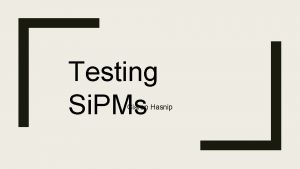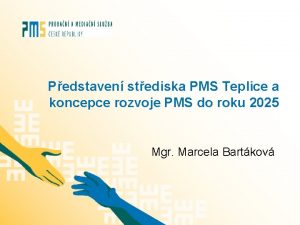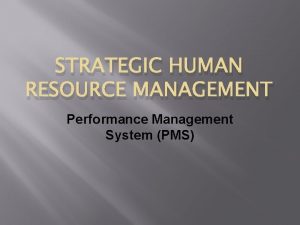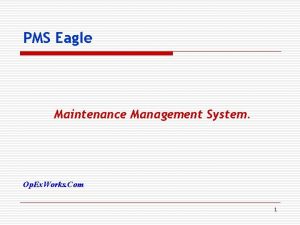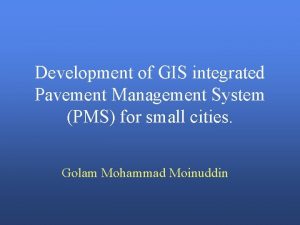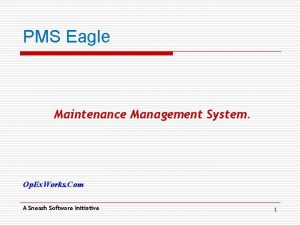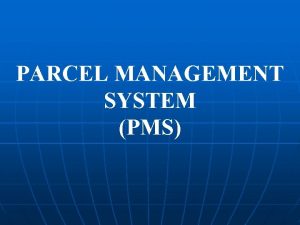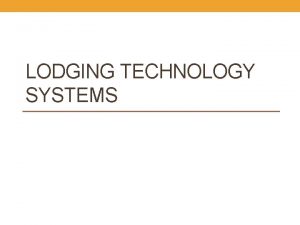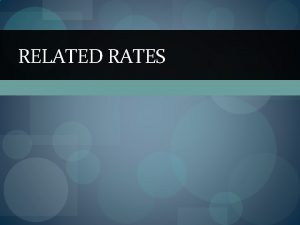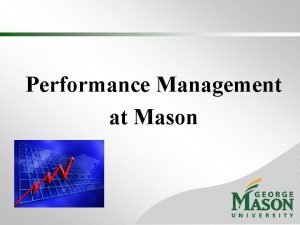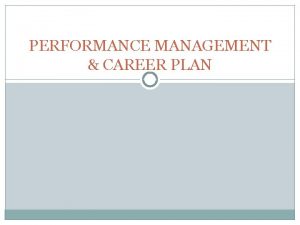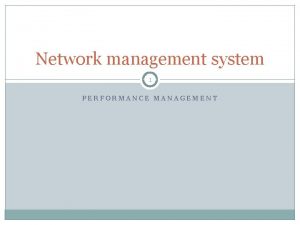Workshop on Performance Management System PMS Performance Related




















- Slides: 20

Workshop on Performance Management System (PMS) & Performance Related Pay (PRP) ******* (Department of Public Enterprises) Govt. of India 31. 08. 2012 Visakhapatnam 1

2007 Pay Revision : Background • Constitution of the II PRC in November, 2006 • Headed by Justice M. J. Rao, retired Supreme Court Judge • Committee gave its recommendations in May, 08 • Some recommendations not accepted • DPE O. Ms dated 26. 11. 2008 & 9. 2. 2009 • Appointment of Committee of Ministers (Chidambaram Committee) • DPE O. M dated 2. 4. 2009 2

PRP in 1997 pay revision • Out of 5% ‘Distributable Profit’ for the entire CPSE as a whole • Freedom to the management to decide the amount each individual should get • Total PRP to be paid to all the employees including workmen not to exceed 5% ‘Distributable Profit’ • PLI ideally to be part of Perks & Allowances. However, if it is not sufficient it could be paid as PRP • Problems in PRP system in 1997 pay revision 3

Paradigm shift in PRP/PMS in 2007 Pay Revision • DPE O. Ms dated 26. 11. 08 & 09. 02. 09 lay down transparent method for calculation of incentive w. e. f. 01. 07 for all executives and Non-Unionised supervisors of CPSEs. • O. Ms provide for PRP is linked directly to the profits of the CPSE and performance of the executive. • PRP progressively increases with level of the executive. 4

PRP determinants 1. Profit of CPSE 2. Grade of Executives (E 0 – 40% to CMD(A) 200%) 3. Mo. U rating of CPSE (Excellent – 100% to poor – 0%) 4. PAR rating of Executive (Excellent – 100% to poor - 0% in a system based on PMS) 5. Remuneration Committee 5

Profit of the CPSE and PRP Ø PRP will come out of profits of the CPSE Ø 60% of the PRP will be within ceiling of 3% of Profit before Tax (PBT) Ø 40% of PRP from 10% of incremental profit as compared to previous year’s profit Ø The total PRP, however, will be limited to 5% of the year’s PBT, both for executives and non unionized supervisors Ø The PRP for the year will be calculated latest by December of the following year, based on the CPSE’s performance as per audited accounts Ø The proposed PRP scheme will begin w. e. f. financial 6 year 2007 -2008

Maximum PRP for different Grades Grade % of Basic Pay E 0 to E 3 40 E 4 to E 5 50 E 6 to E 7 60 E 8 to E 9 70 Director (C&D) 100 Director(A&B) & 150 CMD(C&D) CMD(A&B) 200 7

PRP & Mo. U • Each CPSE to sign the Mo. U. • Mo. U rating will form the basis of PRP. • All the key Result Areas to be identified in the Mo. U. • CPSEs not executing Mo. U will not be eligible for PRP. 8

PRP based on Mo. U rating CPSEs rating %age of PRP for Executives Excellent 100 Very Good 80 Good 60 Fair 40 No PRP for ‘Poor’ rating 9

PMS - DPE Guidelines (26. 11. 2008) • CPSEs to adopt ‘Bell Curve Approach’ • Not more than 15% of executives to be graded as “Outstanding” • 10% of executives to be graded as “Below Par”. • PMS to be introduced latest by 31. 3. 2009 • Between 1. 1. 2007 and 31. 3. 2009 till a PMS is in place, existing guidelines on PRP, (which is limited to 5% of distributable profit will be applicable) 10

PRP and Performance Based on PMS Rating PRP Excellent At 100% eligibility levels Very Good 80% Good 60% Fair 40% Poor 0% 11

Remuneration Committee • Each CPSE to have Professional Boards with Independent Directors. • CPSE to constitute a Remuneration Committee headed by an Independent Director. • No PRP, if there are no Independent Director on the Board of the CPSE. • Remuneration Committee will decide the annual bonus/variable pay pool and policy for its distribution across Executives and Non Unionised Supervisors. 12

Amount of PRP from current and Incremental Profit • Basic Pay X Mo. U rating X PAR • 60% will be from current years PBT • 40% will be from incremental profit • Depending on availability of funds, the PRP would be paid proportionately 13

Annual Performance Reports – DPE issues guidelines for writing Annual Confidential Reports for top management (Chief Executives, Directors and 2 levels below Board). – Earlier guidelines issued in 2005. – Earlier separate formats for Chief Executives and Directors. 14

Salient Features of New Guidelines • Common format for Chief Executives, Directors, Executive Directors (E 9) and General Managers (E 8). • Assessment based on MOU performance of company, Individual targets flowing from MOU and Personal attributes and functional competencies and differential weight to these aspects. • Detailed time schedule prescribed. • Clear channel of submission of PAR prescribed. • Provision of strict monitoring of PAR process. 15

Salient Features of New Guidelines (contd. ) • Provision of numerical grading for the purpose of objectivity • Clear description of Personal Attributes, Functional Competencies and Benchmarking of assigning grades. • Aspects such as Medical examination, annual property return, training programmes attended, additional qualifications acquired, etc. included in PAR. 16

Salient Features of New Guidelines (contd. ) • Grading to follow Bell Curve approach. • Nomination of nodal officer both in CPSEs and Ministries. • Designation of PAR Repository Authorities to keep PARs in their custody. • While prescribed PAR form, guidelines and procedure to be treated as Core elements, Boards of CPSEs authorized to supplement the contents of PAR under intimation to DPE. • Oversight of Performance Appraisal exercise by DPE. 17

DPE guidelines have further concretized the Performance Appraisal System for E 8 and above. CPSEs are expected to do this exercise for other levels. Weightage What is being Assessed Mo. U Targets Individual targets flowing from Mo. U Targets Personal Attributes and functional competencies Company Unit Individual Total Designation Chief Executive 75 Functional Director 40 EDs(E 9) & GMs (E 8) 25 25 100 35 25 100 50 25 100 18

Why Performance Management System ? • What is measured well is managed well • Bring objectivity, fairness, transparency in assessment (Build Credibility of process) • Harmonize individual, group and Company goals • Recognize & Incentivise superior Performance • Motivate employees for superior performance From each, to the best of his/her ability 19

DPE Website : www. dpe. nic. in Link to DPE pay related guidelines : http: //dpe. nic. in/newgl/glch 4 index. htm Contact details in case of any query on salary/wage related matters. Shri Rajendra Kumar, Director, DPE Telefax : 011 24360624 Email : rajendrakumar 67@nic. in Shri P. J. Michael, Under Secretary, DPE Tele : 011 24360823 Email : michael. pj@nic. in 20
 Parcel management system
Parcel management system Spmig database
Spmig database Amos pms
Amos pms Physical fitness two types
Physical fitness two types Example of skill-related fitness
Example of skill-related fitness Eep mobile al
Eep mobile al Mhc-pms use case diagram
Mhc-pms use case diagram Distributed energy storage
Distributed energy storage Flexisched pms
Flexisched pms Pms scheme standard commercial framework
Pms scheme standard commercial framework Pms scheme nsw
Pms scheme nsw Physical mobility scale score
Physical mobility scale score Mhc-pms use case diagram
Mhc-pms use case diagram Atm sequence diagram
Atm sequence diagram Pid discharge pictures
Pid discharge pictures Asterisk pms integration
Asterisk pms integration Harlan.flex schedule
Harlan.flex schedule Mhc-pms meaning
Mhc-pms meaning Mhc-pms in software engineering
Mhc-pms in software engineering Pms377
Pms377 Pms santa fe community guidance center
Pms santa fe community guidance center
